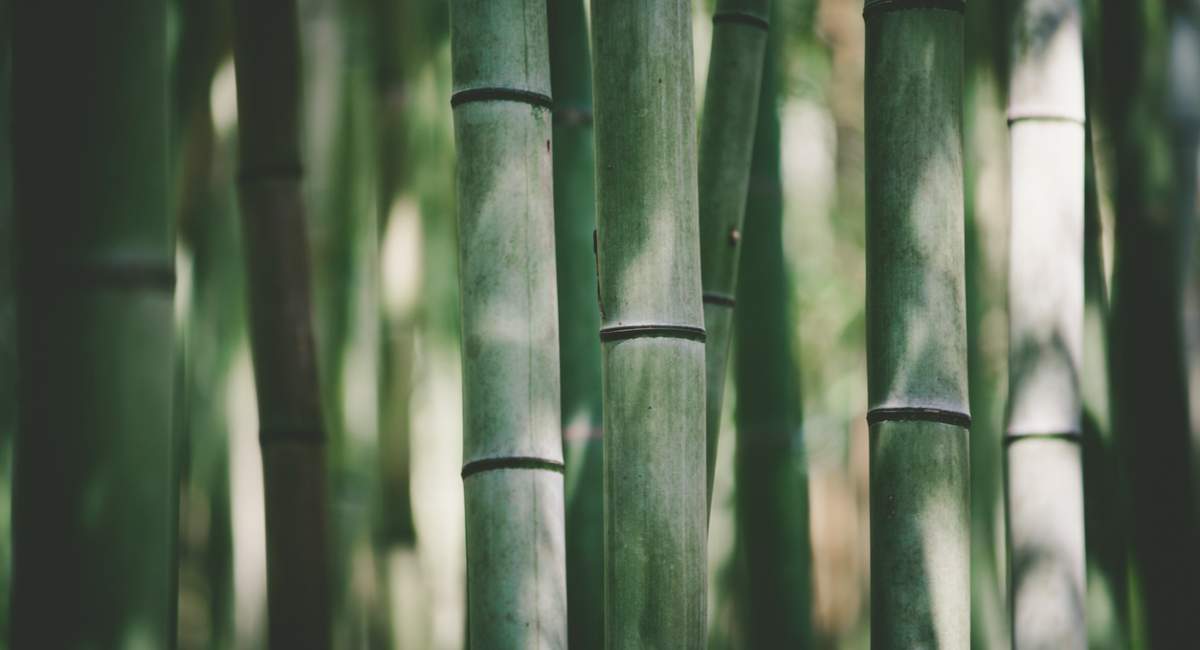
Does bamboo fabric live up to its reputation of being sustainably made and good for the environment? Let’s take a closer look at this unique fabric, as well as its history and its uses.
What is Bamboo Fabric?
Bamboo fabric is a textile made from the bamboo plant, the fastest growing plant on the planet. This fabric is often considered to be good for the environment. Bamboo is part of the grass family, and it does not require pesticides or dangerous chemicals to grow.
Bamboo is also a renewable resource because new shoots grow from the root system after it is harvested. Unlike hardwood trees which take decades to reach maturity, bamboo plants reach full maturity in a few years. Every part of the bamboo plant can be used, which means there is zero waste.
Some manufacturers promise that their bamboo fabric truly is sustainable and does not harm the environment. Other manufacturers are not so careful. This means it’s important to look for manufacturers that are transparent about their process.
How Is Bamboo Fabric Made?
“Bamboo linen” is one type of bamboo fabric. The linen is made by combing out bamboo fibers and spinning them into a thread. This fabric is a bit coarse to the touch compared to other bamboo products.
A more popular method of making bamboo fabric uses a chemical process to create a fabric called “bamboo rayon.” In this method, bamboo cellulose is dissolved in chemicals to form a pulpy substance that is then spun into fibers. The harsh chemicals used make this method less environmentally friendly. However, the resulting product is a lovely, soft fabric that is breathable, stretchy, and strong.
The Properties of Bamboo
Bamboo fabric has some very desirable properties. It feels silky and soft against your skin, and it wicks moisture away from your body. The fabric is very stretchy as well as breathable. It also dries quickly, making you feel cool and comfortable in warm, humid weather.
In cooler weather, the fabric helps keep you warm. This is thanks to the cross-sectional fibers that trap warm air inside the clothes. Bamboo is naturally hypoallergenic, perfect for people with sensitive skin. It also resists wrinkles better than cotton.
The bamboo plant is very resistant to bacteria. Some people claim that this antibacterial property carries through into the fabric, making bamboo fabric cleaner and odor-resistant. Bamboo fabric does have a tendency to shrink in the wash. It’s important to wash it in cool water and allow it to air dry.
The History Behind Bamboo Fabric
Although it seems like bamboo fabric is trendy today, it’s actually been around for thousands of years in Asia. India, China, Afghanistan, Pakistan, and Indonesia all produce bamboo textile today. In rural India, people celebrate bamboo fabric with a festival every year. In China, bamboo has been an important part of the culture for as long as anyone can remember.
Unfortunately, China’s environmental standards have been loose for the past few decades. This means that textile production is less expensive there since they don’t have as many strict standards as other countries. Bamboo textiles created in China may not be the environmentally-friendly material you’re hoping for.
Using Bamboo in Your Brand
Bamboo has many of the same properties as cotton, such as softness and comfort, and in some cases, it is superior to cotton. This fabric is naturally strong and durable, so it makes great material for clothing that gets worn often, such as underwear, t-shirts, and pajamas. You can make bamboo socks, bamboo robes, bamboo shorts, and bamboo dresses. This fabric feels great against your skin, so it works well as the bottom layer when you wear layers of clothing.
Bamboo clothing is also great for travelers. The material resists wrinkles better than cotton, making it a great fabric to pack in your suitcase. It also provides temperature control, good for whatever weather you come across. The moisture-wicking material keeps itself fresher, so you might feel comfortable wearing bamboo clothing two or three days in a row without washing it.
Consider bamboo clothing for casual garments worn in spring, fall, or summer. The material moves well with your body, so it’s good for activities like boating, fishing, spending a day on the beach, or playing in the park.
If your fashion brand is eco-friendly, then it’s a good idea to research how your fabric is produced. Be sure to seek out fabric made in a responsible way. Then, be transparent about that on your own website and other marketing materials.
